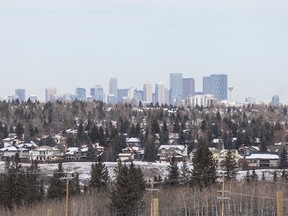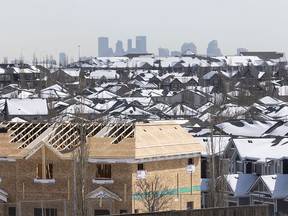“Part of what we’re seeing now is really just a consequence of there being a lot of economic opportunities for workers in the province,” said Calgary economist Trevor Tombe.

Article content
Alberta continues to lead population growth across the country, even as the pace at which the province grows is slowing.
The province welcomed more than 9,000 newcomers from other parts of Canada in the fourth quarter of 2023, bringing annual interprovincial migration to more than 55,000, according to StatCan data released Wednesday. It is the largest increase in interprovincial migration nationwide since comparable data became available in 1972.
Advertisement 2
Article content
Article content
The latest update is the continuation of a trend since 2022, which marked a reversal of a period of migration out of the province between 2015 and 2021, when at one point the price of oil fell below $40 a barrel.
Although the majority of immigrants in 2023 came from Ontario, the largest interprovincial migration in the final quarter of the year occurred between British Columbia and Alberta, according to StatCan. Most British Columbia residents who left that province came to Alberta.
BC reported its first negative interprovincial migration (-8,624 residents last year) for the first time since 2012.
Calgary economist Trevor Tombe said he’s not surprised by the data.
“Part of what we’re seeing now is really just a consequence of there being a lot of economic opportunities for workers in the province,” Tombe said.
“What’s new, of course, is the affordability issues that exist, predominantly in Vancouver and Toronto.”
Recommended by Editorial
-

By advocating for more Ukrainian evacuees, Alberta government seeks more control over provincial immigration system
-

Alberta calls again: province wants more skilled workers to close job gap
-

Alberta population growing fastest in Canada
Article content
Advertisement 3
Article content
Overall, Alberta grew by 202,324 residents in 2023, about double the population of Red Deer. Nearly two-thirds were immigrants, while 27 percent were from other parts of the country and eight percent were the result of a higher birth rate.
The population growth rate was 4.4 percent in 2023, the highest since 1981.
Driving the population increase were non-permanent international residents, who accounted for 60 per cent of immigration to Alberta.
Rob Roach, economist at ATB Financial, said the increase in international migration is due to the easing of restrictions due to COVID-19, which had restricted the flow of migrants.
“It’s a temporary increase to recover from the disruption of the pandemic,” Roach said.
Population growth slowed from 1.3 percent to 0.9 percent in the fourth quarter of 2023 following an overwhelming wave of migration.
“The main reason we’re seeing a bit of a slowdown at the end of the year was because the province just couldn’t maintain that kind of record,” Roach said.
Balance needed between immigration and infrastructure
The explosion in the number of newcomers and the UCP government’s vision to grow Alberta from 4.7 million to 10 million by 2050 have raised questions about the province’s ability to accommodate them.
Advertisement 4
Article content
Frano Cavar, director of government relations for the Calgary Construction Association, previously called the population increase a “trap road,” where immigration helped inject 13,000 jobs into the industry in 2022, but also put Test existing infrastructure.
“Immigrants are needed, certainly to fill the (job) gap right now,” Cavar said. “But increasingly, immigration increases demand for infrastructure. And the question is: will we be able to find a balance?”
According to CMHC data, the province added only 35,223 homes in 2023.

Increased demand for rentals, driven by higher interest rates and a lack of affordable housing, has caused rents in Alberta to skyrocket by 20 per cent, according to a Rentals.ca report, with the average monthly rate for a bedroom one bedroom in Alberta is priced at $1,711.
As vacancy rates in the city plummet to 1.4 per cent and waiting lists for social housing reach 6,679 by February 2024, renters are finding it harder to get into housing.
For example, one in six renters have been looking for a place to live in Alberta for more than six months, and more than half say they can’t find a home in their price range, according to a separate Rentals.ca report. .
Article content



